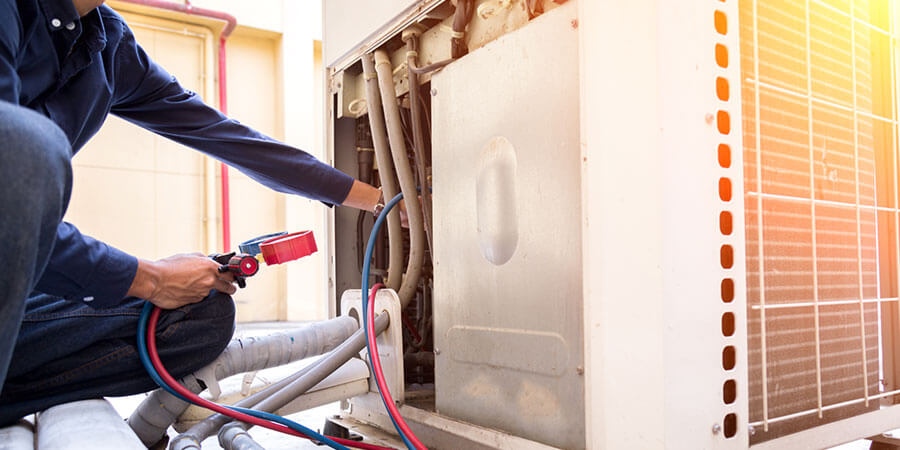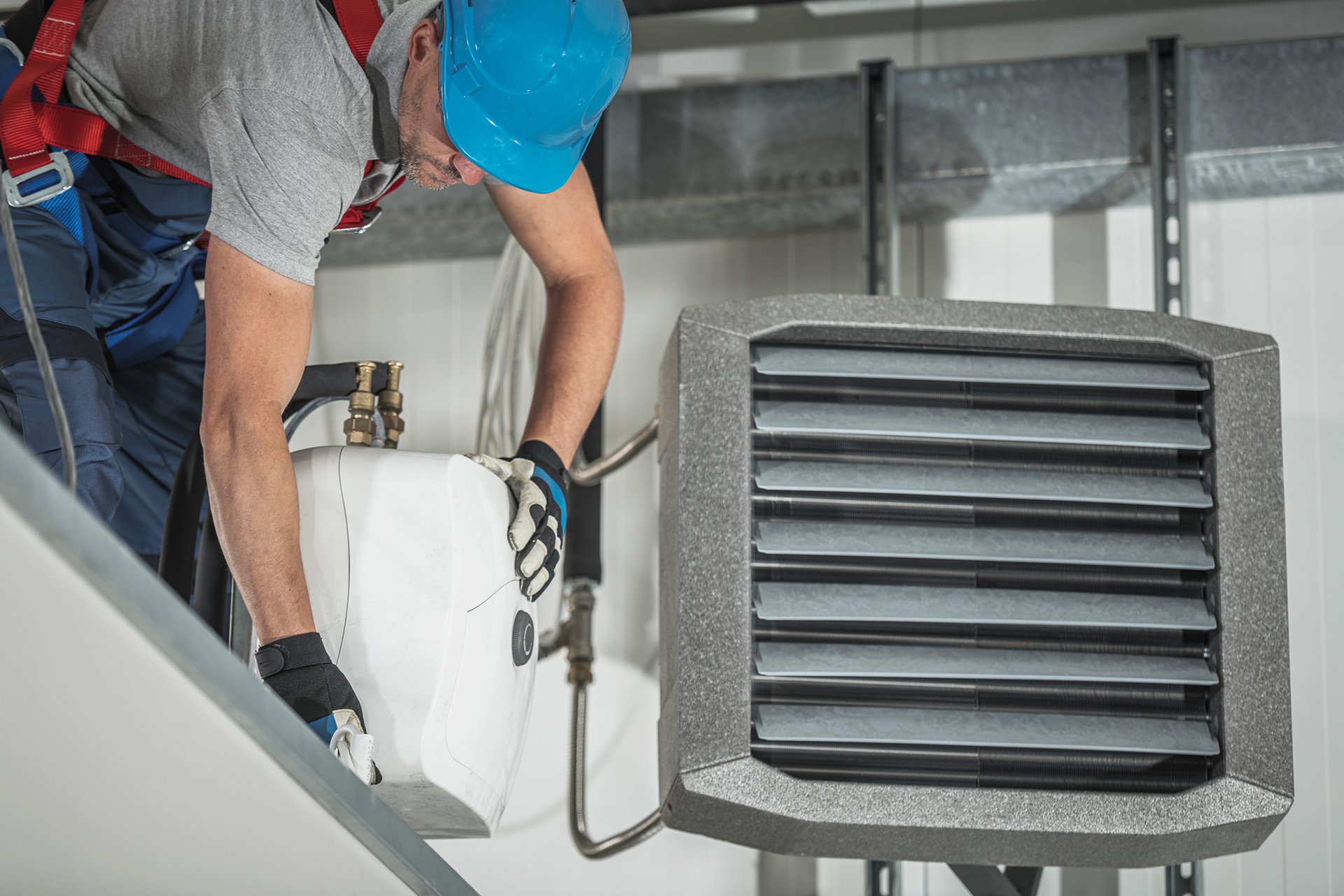How a Heat Pump and Heater Interact to Optimize Your Home's Home heating Effectiveness
Understanding just how a warmth pump and heater interact is necessary for house owners seeking efficient heating solutions. Each system has its strengths, offering a well balanced approach to home convenience. The heat pump masters modest temperatures, while the heater provides quick heat during severe cold. This harmony not just minimizes energy prices but also improves the life-span of both home appliances. What factors influence this partnership, and how can home owners maximize their benefits?
Comprehending Heat Pumps: How They Work
Although many individuals might be strange with their inner workings, warmth pumps play an important duty in modern-day heater. These tools run by transferring heat from one area to another, making use of the principles of thermodynamics. In colder months, a heat pump essences warmth from the outside air, ground, or water, and transfers it inside to heat the space. On the other hand, throughout warmer months, it can reverse the process, serving as an ac system by getting rid of warm from inside to the outside.Heat pumps include an evaporator, compressor, development, and condenser valve. The refrigerant within the system absorbs warm as it vaporizes at reduced temperatures and stress. The compressor then increases the stress and temperature level of the refrigerant, permitting it to release warmth as it condenses. This efficient process can significantly minimize power usage contrasted to typical home heating techniques, making heatpump a sustainable choice for environment control in homes.
The Function of Heating Systems in Home Home Heating
Heating systems play an important function in home heating by supplying a reliable source of heat during the cooler months. They operate by creating warm via combustion or electric resistance, dispersing it throughout the home by means of air ducts or radiant systems. The efficiency of a heating system is usually gauged by its Yearly Fuel Use Performance (AFUE) score, which indicates exactly how successfully the device converts fuel into heat.Furnaces can make use of different power sources, including gas, gas, power, or oil, allowing home owners to select one of the most suitable choice for their needs. Unlike warmth pumps, which may have a hard time in severe cold, heaters maintain constant efficiency, making sure that indoor temperature levels stay comfy despite outdoor conditions. Additionally, modern-day heaters commonly come outfitted with innovative technology, such as wise thermostats and variable-speed blowers, improving their performance and responsiveness. This flexibility makes heating systems a critical element in all-inclusive home heating approaches.

Advantages of Making Use Of Both Solutions Together
Combining the toughness of both heaters and warm pumps can bring about an extra efficient and effective home heating remedy. Utilizing both systems allows property owners to benefit from the heatpump's energy effectiveness throughout milder temperature levels while depending on the heating system for more extreme cold conditions. This double approach can considerably reduce energy prices, as heat pumps consume less electrical energy than standard heating techniques when temperature levels are moderate.Additionally, using both systems together can enhance convenience levels in the home. Warmth pumps can give constant, also home heating, while heating systems can rapidly increase ambient temperatures when required. Moreover, the integration of both systems can extend the lifespan of tools by decreasing wear and tear on each unit, as they share the work. Eventually, home owners can appreciate a well balanced, economical home heating service that changes flawlessly to differing weather, ensuring a warm and welcoming home throughout the winter season.
How Heat Pumps and Furnaces Enhance Each Other
They develop a corresponding home heating system that makes the most of effectiveness and convenience when home owners incorporate warmth pumps and heaters. Heat pumps operate by transferring heat from the outdoors air or ground, making them highly efficient in moderate climates. They stand out during milder temperature levels, supplying cost-efficient heating. On the other hand, heating systems produce warm with combustion or electric resistance, delivering solid, instant heat during extreme chilly conditions.The combination of these two systems permits dynamic adjustments based upon temperature level fluctuations. Throughout warmer months or milder winter months days, the heatpump can take the lead, conserving power and decreasing expenses. As temperatures drop, the furnace can effortlessly engage, guaranteeing consistent warmth throughout the home. This harmony not only optimizes power use yet additionally improves the lifespan of both systems, as each device runs within its suitable efficiency variety. Together, they develop a well balanced atmosphere that adapts to differing climate demands.
Optimizing Efficiency: Tips for Homeowners
Homeowners can improve their heating performance with several functional methods. Establishing a routine upkeep routine, incorporating clever thermostat modern technology, and executing effective insulation and securing services are vital steps. These actions not only boost comfort but also lower energy expenses.
Normal Upkeep Set Up
To assure maximum home heating effectiveness, establishing a routine maintenance routine is vital for any home. Home owners ought to focus on routine inspections of both heatpump and furnaces to establish peak performance. This includes transforming air filters each to 3 months, as blocked filters can substantially reduce effectiveness. In addition, organizing professional maintenance at the very least annually allows professionals to identify and deal with prospective issues prior to they rise. Homeowners ought to also clean up the warmth pump's exterior device to prevent particles buildup that can hinder airflow. By adhering to a normal maintenance schedule, property owners not only boost their heating unit' efficiency but likewise expand their lifespan, bring about higher convenience and lowered energy expenses throughout the cooler months.
Smart Thermostat Combination
Incorporating a clever thermostat right into a home heater can greatly enhance energy effectiveness, specifically as it enables for accurate control over temperature settings. These devices can learn the home owner's routine and preferences, immediately adjusting the temperature to maximize comfort while minimizing energy usage. They can reduce home heating throughout times when the home is unoccupied, minimizing unnecessary usage. Several wise thermostats additionally provide real-time energy usage data, allowing homeowners to make enlightened choices concerning their heating habits. Additionally, remote accessibility through smart device apps enables users to readjust setups from anywhere, ensuring the home is warm upon return. Check This Out Overall, wise thermostat assimilation not only improves convenience but significantly adds to power financial savings and performance.
Insulation and Securing Solutions
Smart thermostats play a vital function in power performance, but their efficiency can be greatly enhanced by proper insulation and sealing options. Homeowners ought to prioritize insulating attics, floors, and wall surfaces to decrease warmth loss. High-grade insulation materials, such as spray foam or fiberglass, can significantly boost thermal resistance. In addition, sealing spaces around ducts, doors, and windows protects against chilly air infiltration and warm escape. Weatherstripping and caulking work techniques for resolving these leakages - heat pump replacement ooltewah tn. Routine evaluations for air leaks, together with the usage of blower door examinations, can help recognize issue areas. By purchasing insulation and securing, homeowners can maximize the efficiency of their heater, ultimately causing minimized power intake and reduced utility costs
Usual Misconceptions Regarding Heat Pumps and Furnaces
What misunderstandings surround heatpump and furnaces? Lots of individuals mistakenly think that warm pumps are ineffective in colder environments. In fact, contemporary warm pumps are created to run effectively also in low temperature levels, supplying reliable home heating throughout winter months. One more typical misconception is that heating systems are constantly much more efficient than heatpump. Nonetheless, this relies on the particular energy resources and performance ratings of the systems in question. Some may additionally think that utilizing both systems concurrently is unnecessary, however in truth, this mix can optimize heating performance, especially during extreme climate condition. In addition, people commonly assume that heatpump require constant upkeep, when check these guys out truthfully, they have similar upkeep needs to traditional heater. By unmasking these misconceptions, house owners can make more informed choices regarding their heating options, eventually bring about improved comfort and power effectiveness in their homes.
Maintenance Factors To Consider for Combined Systems

Often Asked Concerns
Can Warm Pumps Work Efficiently in Exceptionally Cold Climates?
Heatpump can have a hard time in exceptionally cool environments as a result of decreased efficiency and heat extraction constraints. However, innovations in modern technology have brought about designs designed for far better efficiency in such conditions, improving their practicality in extreme settings.
For How Long Do Heat Pumps and Furnaces Normally Last?
Warm pumps generally last 15 to twenty years, while heaters have a life-span of 15 to thirty years. Regular upkeep can expand their durability, making certain reliable operation and minimizing the demand for premature replacements.

What Is the Average Expense of Putting Up Both Systems?
The ordinary price of mounting both a warm pump and a heating system generally ranges between $5,000 to $10,000 - heat pump replacement ooltewah tn. Factors influencing this expense include system dimension, installment intricacy, and regional labor rates
Are There Tax Obligation Rewards for Making Use Of Energy-Efficient Home Heating Equipments?
Several home owners ask about tax incentives for energy-efficient heating systems. Numerous federal and state programs frequently use rebates or credit reports, motivating the adoption of lasting modern technologies to reduce power consumption and advertise ecological obligation.
How Do I Choose the Right Dimension Warmth Pump and Furnace?
Choosing the right dimension warmth pump and furnace includes determining the home's square video, thinking about insulation high quality, and examining neighborhood environment. Consulting an expert can guarantee perfect system performance and power performance based upon certain demands. furnace replacement. Understanding exactly how a warmth pump and heater job with each other is essential for house owners looking for efficient home heating services. In chillier months, a warmth pump essences warm from the outside air, ground, or water, and transfers it indoors to heat the living area. When homeowners integrate warmth pumps and heaters, they create a complementary home heating system that makes the most of performance and convenience. Heat pumps run by transferring warm from the outdoors air or ground, making them very efficient in modest environments. Heat pumps can battle in very cold climates due to lowered performance and heat extraction constraints